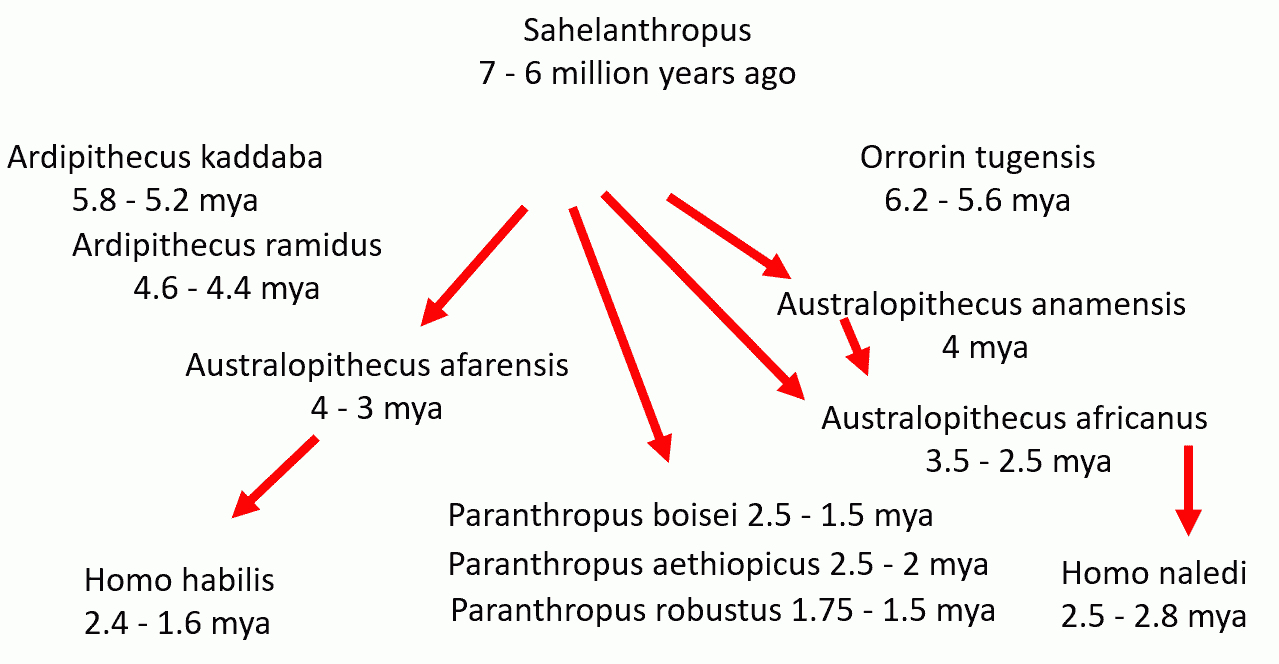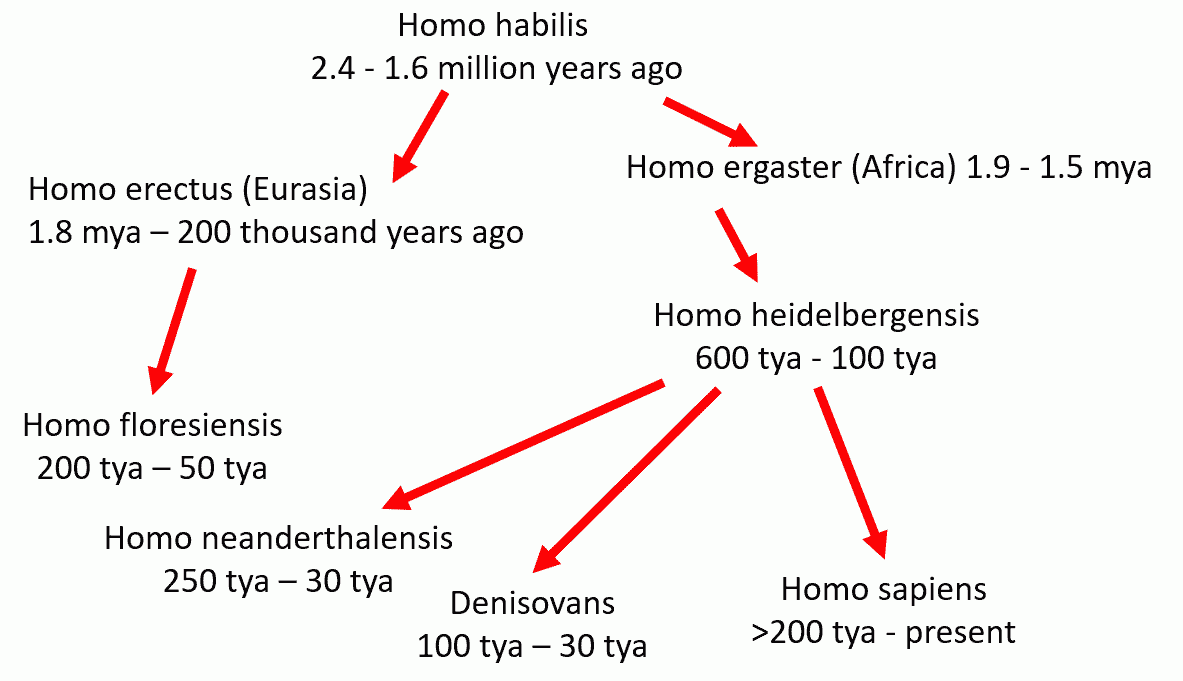
Skeleton of Cro-Magnon of La Madeleine
(Musée de Préhistoire, Les Eyzies)
|
Go to site main page, student resources page. |
File last modified:
Go to Essay 1 |
Many universities have one- or two-year course sequences on “World History.” UCSD’s Roosevelt College has one. It is called “The Making of the Modern World” (“MMW”), and I taught in it from 1988 to 2019. Typically such sequences focus almost exclusively on written history and world literature. MMW is no exception.
Humans did not first appear with the first writing —most of our time on this planet occurred before writing existed (although one colleague famously and sententiously announced that human thought is not possible without writing). Nor are we unaffected by our biological traits or the environments around us.
The first section of the MMW sequence therefore originally made a brief nod to our human biological heritage as seen through human paleontology, including the fossil record and DNA research. Probably no field of study provides clearer exemplification of scholarly argumentation about evidence than human paleontology, so how we know what we know was an important part of the discussion, and, for our freshman students, an optimal introduction to university life.
Unfortunately, given the number of other topics to be covered, paleontology had to be given extremely short shrift, and no published textbook of this complex field was truly suited to accommodate such brevity, at least if we excluded accounts intended for children.
The essays making up this extremely brief introduction were therefore written specifically for MMW. This text was drafted by award-winning MMW TAs Tara Carter and Beth Peterson from the Department of Anthropology in the summer of 2008, supported by research funds left in his account on the death of Prof. Donald F. Tuzin, long an instructor and supporter of MMW.
The text was very substantially modified by me (D. K. Jordan) in summer, 2011, and then again in 2013, when the six-quarter sequence was reduced toS five, with most of the cuts made to the earliest materials. The goal remained to provide an overview of the data and arguments that now prevail among mainstream scholars studying our evolutionary past, but not all of the essays could be assigned in the time available, so each was converted to a stand-alone discussion of its topic to allow maximum flexibility. (As a result, readers will notice some overlaps as well as a few gaps that were originally filled in during class lectures.) Chapters 2, 6, and 10 (the ones by Jordan) already existed and were inserted despite some overlap. They are slightly differently formatted.
The essays generally avoid discussing particular fossils or recent finds, since the focus is necessarily on the emergent “big picture” and the logic underlying our understanding of it. Such specific fossil hominids as are discussed can usually be found in Essential Fossils: A Folio, a group of pages that provide both pictures and brief summary facts about nearly all of the forms discussed here. The essays have been shortened to refer to the folio rather than to repeat the information in it.
Each essay is provided with one or more interactive quizzes for readers who would like to firm up their memory of what they have just read.
We wish to express our gratitude to Dr. Nancy Friedlander, a biological anthropologist, former MMW instructor, and former Dean of Academic Advising at Eleanor Roosevelt College, for her careful and insightful comments as these essays reached their final versions, as well as to the many MMW students whose important perspectives, provocative questions, and useful suggestions have influenced our thinking throughout.

These essays are full of people’s names, technical terms and exotic Latin specimen names. It is not as bad as it seems. In the end, there are only eight major “players”:
The two charts below are far more simplified than the real situation, and imply far more clarity than available fossil specimens justify. For one thing, hundreds of forms are left out. For another, the arrows were made up by me. But you may find them helpful as you read the following chapters.
To help you remember them, try finding three kinds Australopithecus in Chart 1. We don’t know how many different species of Australopithecus there were. The ones shown are the most often discussed. Notice the line leading from Australopithecus africanus to Homo naledi. I made that up, and I can think of lots of reasons why it is probably wrong. Nobody actually knows where Homo naledi came from. Notice the inclusion of Paranthropus. That is a “robust” kind of Australopithecus, and in fact some people still regard Paranthropus forms as robust kinds of Australopithcus. Trying Googling and see what you find.
The second chart is devoted entirely to various kinds of Homo. They probably all descended from H. habilis, but beyond that nothing is very clear, and the arrows are gross simplifications. H. erectus and H. ergaster are regarded by many scholars as the same animal, differing only in age and location. Once again, Homo naledi is inscrutable.
Homo heidelbergensis was merely a sturdy-looking jaw named “Mauer” when I went to graduate school. The category has been expanded, for better or worse, to include a vast range of miscellaneous fossils that used to be lumped together as simply “early homo” or “early modern” forms.
Denisovans are the new kids on the block. Known almost entirely from central Siberian DNA, they seem to be most closely related to Neanderthals. Neanderthals, and Denisovans seem to have been inter-fertile, at least some of the time, and unless you are of purely African descent, you probably have some Neanderthal and Denisovan DNA in you. (Like most diversification, from Neolithic crops to modern investment portfolios, DNA diversification is probably also generally beneficial.)


A review quiz is available for these charts. Link.